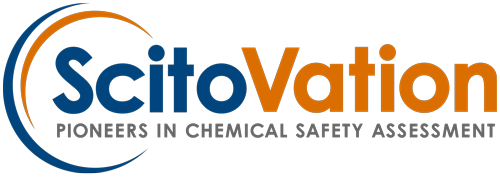In continuing the momentum on the topic of quantitative interpretation of genotoxicity dose-response data for risk assessment, we have the pleasure of hosting Paul A. White, PhD as our next webinar speaker. Dr White is a research scientist at the Environmental Health Science and Research Bureau of Health Canada in Ottawa, Ontario, Canada.
What you will learn:
- Assumptions underlying the screen-and-bin qualitative paradigm for interpretation of genotoxicity test results.
- The alternative paradigm for quantitative interpretation of genotoxicity dose-response data.
- A conceptual framework whereby quantitative analysis of dose-response data can be used as the basis for determination of Margin of Exposure values and/or Health-based Guidance Values.
- Challenges regarding the implementation of quantitative analyses for interpretation of genetic toxicity dose-response data in a regulatory context.
Paul A. White obtained his BSc in microbiology and immunology, and PhD in environmental toxicology, from McGill University in Montreal. He conducted post-doctoral research at US EPA facilities in Rhode Island and North Carolina; investigating the mutagenic hazards of municipal wastewaters. He joined Health Canada in 1999 and is currently a senior research scientist in the Environmental Health Science and Research Bureau. In 2002 he was appointed Professor of Chemical and Environmental Toxicology in the Department of Biology at the University of Ottawa. His current work investigates the mutagenic and carcinogenic hazards of complex mixtures, the design and validation of in vitro tools for genetic toxicity assessment, the use of molecular biomarkers for mutagen exposure assessment, and the application of quantitative methods for interpretation of genetic toxicity dose-response data. He has published over 125 peer-reviewed papers, and his work has been cited over 6700 times. He currently serves on the editorial boards of Environmental and Molecular Mutagenesis, Mutation Research Reviews, Genes and Environment, and Food and Chemical Toxicology, and he is currently the vice-president of the International Association of Environmental Mutagenesis and Genomics Societies (IAEMGS).
Abstract:
Genetic toxicity assay results are traditionally interpreted using a screen-and-bin approach whereby substances can be qualitatively categorised as genotoxic. This paradigm is predicated on three assumptions: (i) that genotoxic substances are rare and exposures can be entirely avoided, (ii) that genetic toxicity dose-response data do not display evidence of thresholds, and (iii) that genetic toxicity is not a bona fide endpoint for regulatory decision-making. These assumptions are false. Genotoxic substances are ubiquitously found in air, water, soil, food, and consumer products; some level of exposure is unavoidable. Genetic toxicity dose-response functions can be distinctly non-linear, displaying doses or concentrations below which there is no effect above the ever-present background. Genetic toxicity is a bona fide toxicological endpoint, and numerous regulatory authorities have recognized the empirical and mechanistic links between genetic damage and a range of adverse health effects. Consequently, there is a need to develop and adopt a conceptual framework whereby quantitative analysis of dose-response data can be used as the basis for determination of Margin of Exposure values and/or Health-based Guidance Values (e.g., Permitted Daily Exposure or Tolerable Daily Intake). Analysis of dose-response data can employ the Benchmark Dose (BMD) approach to determine a Point-of-Departure value that, when interpreted in conjunction with a series of Uncertainty Factors, can be used as the basis for risk assessment and regulatory decision-making. To address the challenges associated with quantitative interpretation of genetic toxicity dose-response data in a regulatory context, the BfR (German Federal Institute for Risk Assessment) recently hosted an international symposium that fostered collaboration, discussion, and debate. The event, and its accompanying workshops, addressed the challenges associated with quantitative interpretation of genetic toxicity dose- or concentration-response data for risk assessment and regulatory decision-making. The presentation will provide an overview of the emerging paradigm for quantitative interpretation of genetic toxicity dose-response data in a regulatory context; moreover, the outcome of the BfR symposium.
About ScitoVation:
ScitoVation helps clients assess chemical compound safety using innovative science, next-generation technology, and professional expertise. ScitoVation is known for partnership, flexibility, and proven success in its work to develop safer and more effective pharmaceuticals, food ingredients, agricultural chemicals, commodity chemicals and consumer products. A spin-off of the former The CIIT and The Hammer Institutes for Chemical & Drug Safety Sciences, ScitoVation is an industry leader of New Approach Methods (NAMS) for chemical/drug discovery & development in the rapidly evolving global regulatory landscape.
